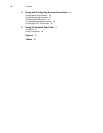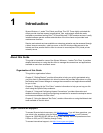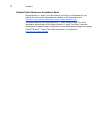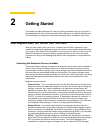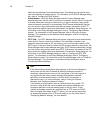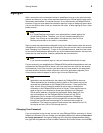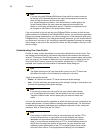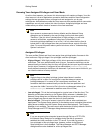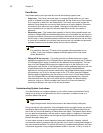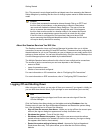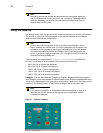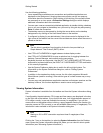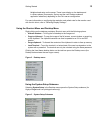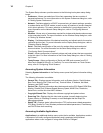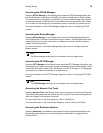
8 Chapter 2
User Modes
User Modes define your login state and include the following types of user:
• Guest user - The Guest user mode logs on using the Global profile only (no User
profile is available) and does not need a password. But the Guest user will be disabled
if no connection is defined in the Global profile. The Guest user cannot access the
Network Setup dialog box and cannot reset the device to factory defaults. Otherwise,
all remaining local resources are available. Although an enterprise file services
account password is not required, individual application servers may require a
password.
• Stand-alone user - This mode makes operation of the thin client possible when user
profiles or PNAgent/PNLite-published applications are not available. No user log-on is
required and network information and connection definitions must be defined locally on
the thin client. Locally entered connection definitions are preserved when the thin client
is turned off or restarted, but individual user accounts are not available and automatic
software updates are not available when the thin client is restarted.
Note
It is possible to have an FTP server which supplies software updates but no
.ini files. In this case, software updates would take place but the user would
still be Stand-alone.
• PNAgent/PNLite-only user - This mode is similar to a Stand-alone user, except
applications published by Citrix PNAgent/PNLite services are available (the IP address
of a PNAgent/PNLite server is entered into the Network Setup dialog box). The user
logs on to the PNAgent/PNLite server but does not log on to the file server or use
configuration user profiles. If the PNAgent/PNLite server publishes fewer than the limit
of applications set by the administrator, the user can locally define additional
applications. As long as the domain password for the PNAgent/PNLite server matches
the password in an ini file for the same user on the FTP server, both the PNAgent/
PNLite published applications and the directives in the user ini file will be processed
(with the PNAgent/PNLite published applications being processed first). However,
other directives from the user ini file could alter the privilege, the default display
resolution, and so on. With the enable local clause for the connect statement,
connections defined in the user ini file may be persistent.
Understanding System Lock-down
Your administrator can configure whether or not to allow access to the Network Setup
dialog box to locally re-configured the thin client to operate in a different mode or to
access a different file server.
Note
High-privileged users always have access to the Network Setup dialog box.
During normal thin client operation, Low-privileged and Non-privileged users may access
the Network Setup dialog box by temporarily disconnecting the Ethernet cable from the
rear of the thin client and rebooting to Stand-alone user mode. The Network Setup dialog
box can also be accessed by a hot-key reset to factory default, in addition to the system
reset available to a Stand-alone user through the Sign-off/Shutdown/Shutdown and
Restart the system dialog box.
In most cases, access to normal operation resources is desirable. However, network
environments requiring maximum security typically do not permit uncontrolled changes to
thin client network operation. To achieve this security, the network administrator can place
a lock-down argument in any privilege statement (either in the user .ini file or in wnos.ini



